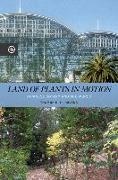Read more
"Land of Plants in Motion is the first in any language to examine two companion stories: (1) the rise of an East Asian floristic zone in deep geological time, how the ancestors of many Japanese plants spread to eastern North America by 5 million years ago, and how the Japanese islands evolved an astonishing wealth of plant species since; and (2) the growth of Japanese botanical sciences, from focusing on herbal medicine and natural history in the Edo period (1600-1868) to developing modern plant biology and amateur botany since the Meiji period (1868-1912). Both paleoclimatological processes and modern commercial motives explain the movement of plants across time and around the world. The majority of plant species regarded as "Japanese" trace their origins to western China and the eastern Himalaya but are so indigenized that they often seem native today. Early modern scientists in Japan drew on knowledge of Chinese herbal medicine but achieved distinctive insights into plant life commensurate with but separate from their European counterparts. Foreign doctors and plant collectors sent Japanese species abroad in the nineteenth century for scientific study and to adorn ornamental gardens. Scholars at the University of Tokyo pioneered Japanese plant biology in the late nineteenth century, incorporating Western botanical methods but seeking a degree of difference in taxonomy while also gaining international legitimacy through publications in English. Makino Tomitaråo and Minakata Kumagusu were extremely productive scholars who promoted public botany among amateur plant aficionados. Japan's age of empire (1895-1945) was one less of exploration than plant collection, for both scientific and economic benefits. Displays of species from throughout the empire made Japan's sphere of colonization and conquest visible at home. The infrastructure for research and instruction expanded slowly after World War Two: new laboratories, botanical gardens, university appointments, scholarly societies, and publications eventually allowed for great diversity of specialized study, especially with the growth of molecular biology in the 1970s and DNA research in the 1980s. Basic research was harmed by cuts in government funding during 2012-2017, but Japanese plant biologists continue to enjoy international esteem in many subfields of scholarship"--
About the author
Thomas R. H. Havens is professor of history at Northeastern University.
Summary
The first book in any language to examine two companion stories: the rise of an East Asian floristic zone and how the Japanese islands evolved an astonishing wealth of plant species, and the growth of Japanese botanical sciences.

